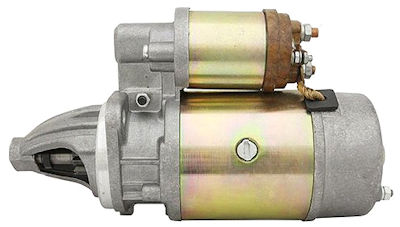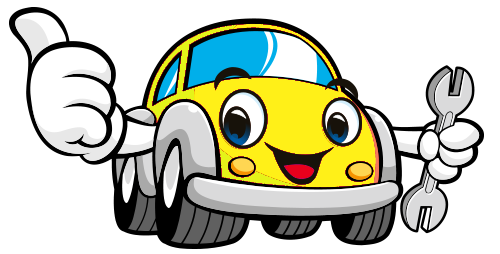

Mobile users:
For best results, view in Landscape mode.

The starter is a small motor, powered by the battery.
It gets the engine of your car running.
A starter relay sits between the battery and the starter motor,
transmitting power.
The starter motor is responsible for cranking the engine
so that it can run by itself.
When you turn the key in the ignition, electricity is sent to
the starter motor, which causes it to actuate and engage
with the flywheel, then spinning it, which gets
the pistons pumping.
There are 2 devices which allow the ignition to fire and
start the engine, the Starter Motor and the Solenoid.
These two devices in conjunction provide
a jolt of electricity from your battery
to make the engine to “turn over”.
A starter motor can last anywhere from
30,000 to more than 100,000 miles.
The starter system should be checked once a year.
Most starters are mounted at the bottom of the engine area
either on the left or right side where the transmission
and engine connect.
The starter on today's cars should be in the rear of the
motor, where a gear on the starter aligns with the car's
flywheel to begin the ignition process.
On today's cars, the starter typically includes the starter
motor and starter solenoid as one assembly.
However, on older cars, the starter solenoid is typically
mounted separately on the inner fender well or near the
battery in the engine compartment.
Some signs the starter is failing:
The most common indicator that there's a problem with
the starter is when you turn your key and nothing
happens.
The two components inside the starter that commonly fail
are the solenoid (which sends an electrical signal to
the starter motor to activate) or the starter motor itself.
You hear a click or clicking sounds when you turn the key.
If you smell or see smoke coming from under the hood when
you're trying to start your car.
Sometimes the starter will overheat because of continued
power being supplied to the starter.
A whirring, Grinding, or Squealing sound:
The pinion gear is the part of the starter that actually connects
with the flywheel.
If it does not engage with the flywheel, it will spin on its own and
create a 'whirr' sound.
This often indicates that the starter solenoid has failed.
A grinding noise that occurs when trying to start the engine is
likely caused by loose starter motor.
It could also mean that there are worn or missing teeth on the
flywheel or pinion gear which isn't allowing the two
gears to properly work together to
crank the engine.
If you try to start your car and the lights work, but the
engine won't turn over, you might have a problem
with the starter.
Other signs may include:
The starter is drenched in engine oil.
Damaged or worn-out parts in the starter system.
Battery corrosion.
Another possible issue is that the problem may not be the
starter at all.
It’s controlled by a relay and if the relay fails, the
starter won’t work.
The starter may also not work if the battery’s charge is
too low (the starter turns very slow), or if the battery is
dead, the starter won’t turn at all.
Check the battery:
Batteries fail far more often than starters.
Make sure the battery terminals are also clean and tight, and
that the battery cables are in good condition.
There are times that you may not even
hear a sound at all and nothing happens.
It's recommended that you replace your
battery every 5 years.


